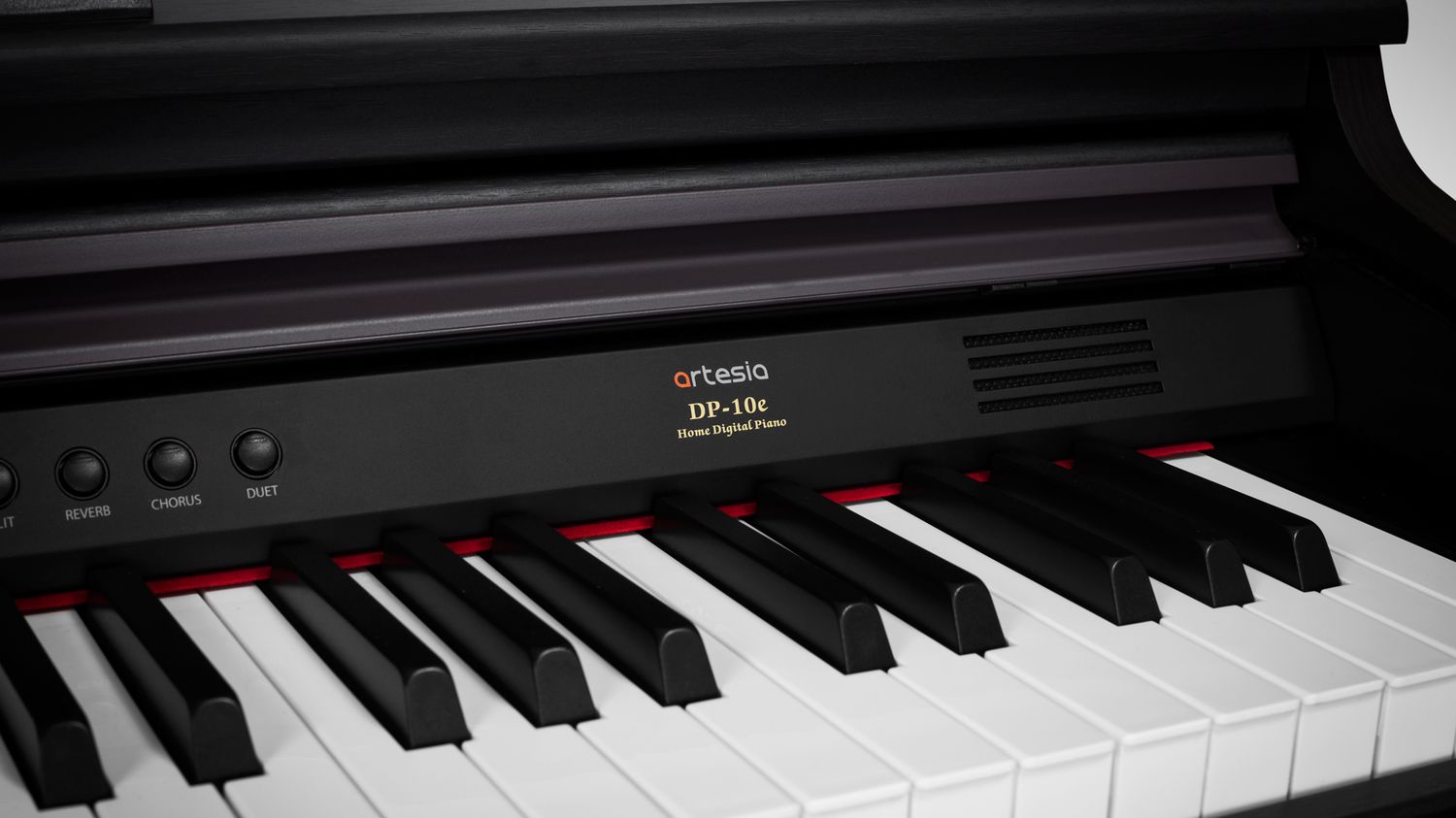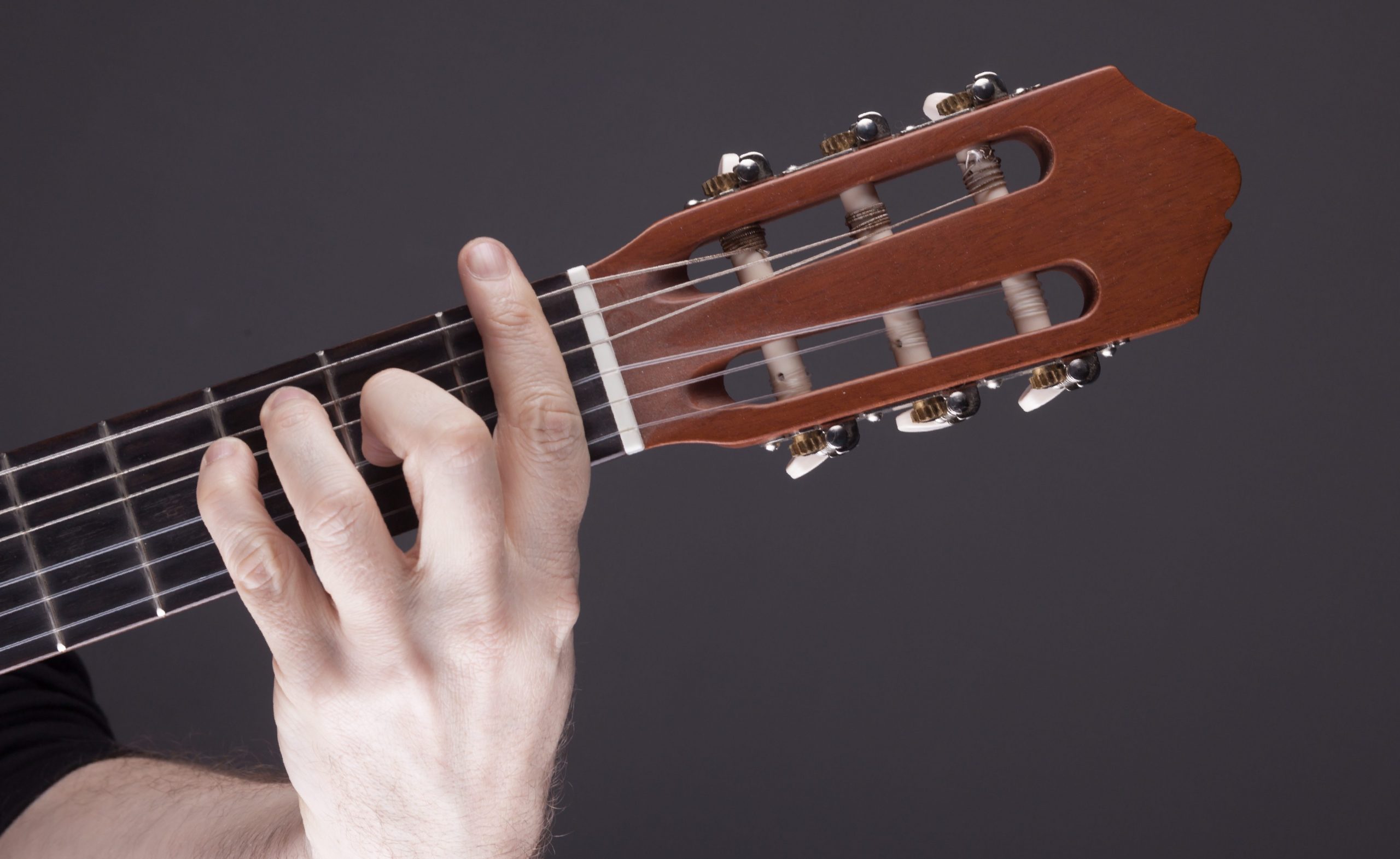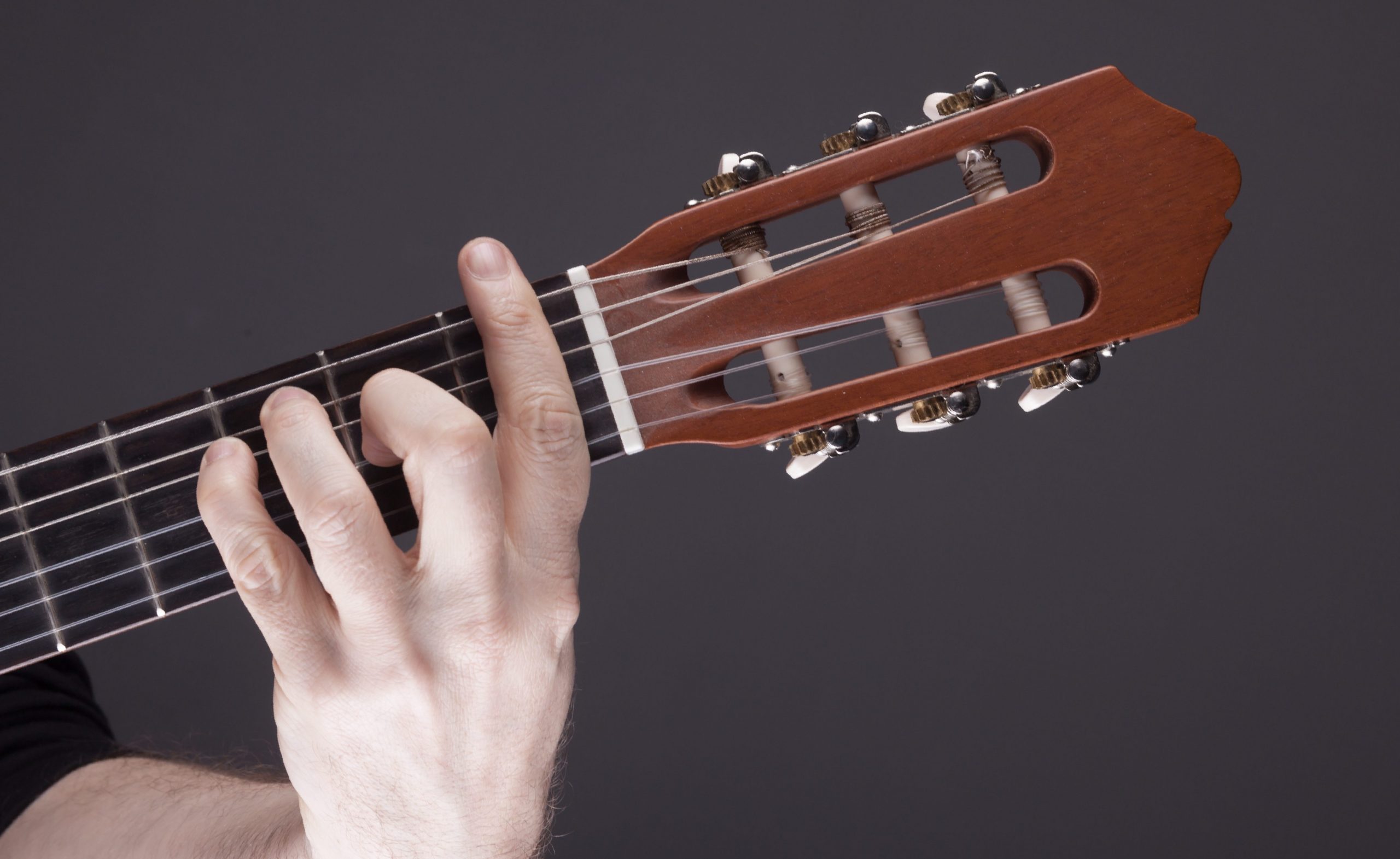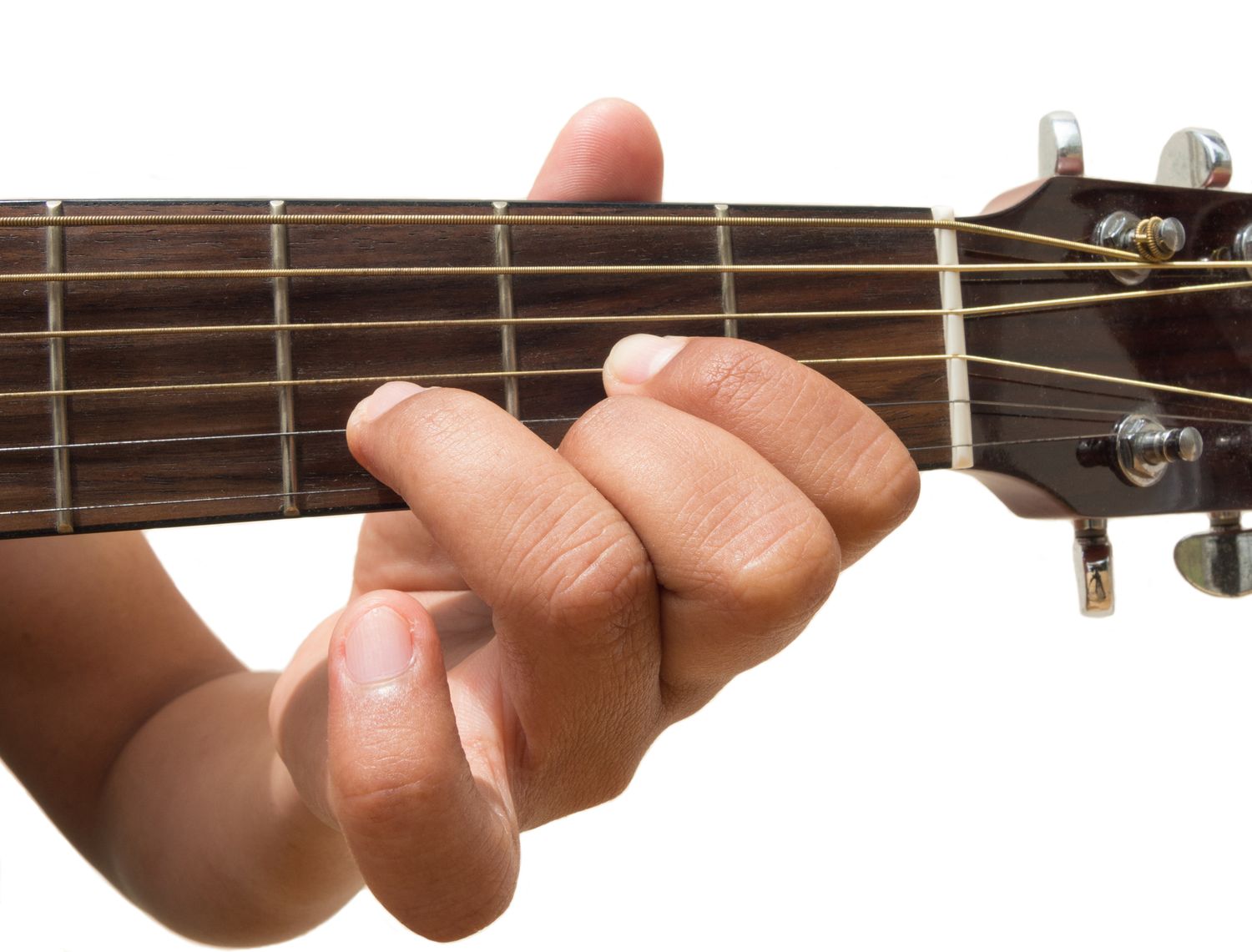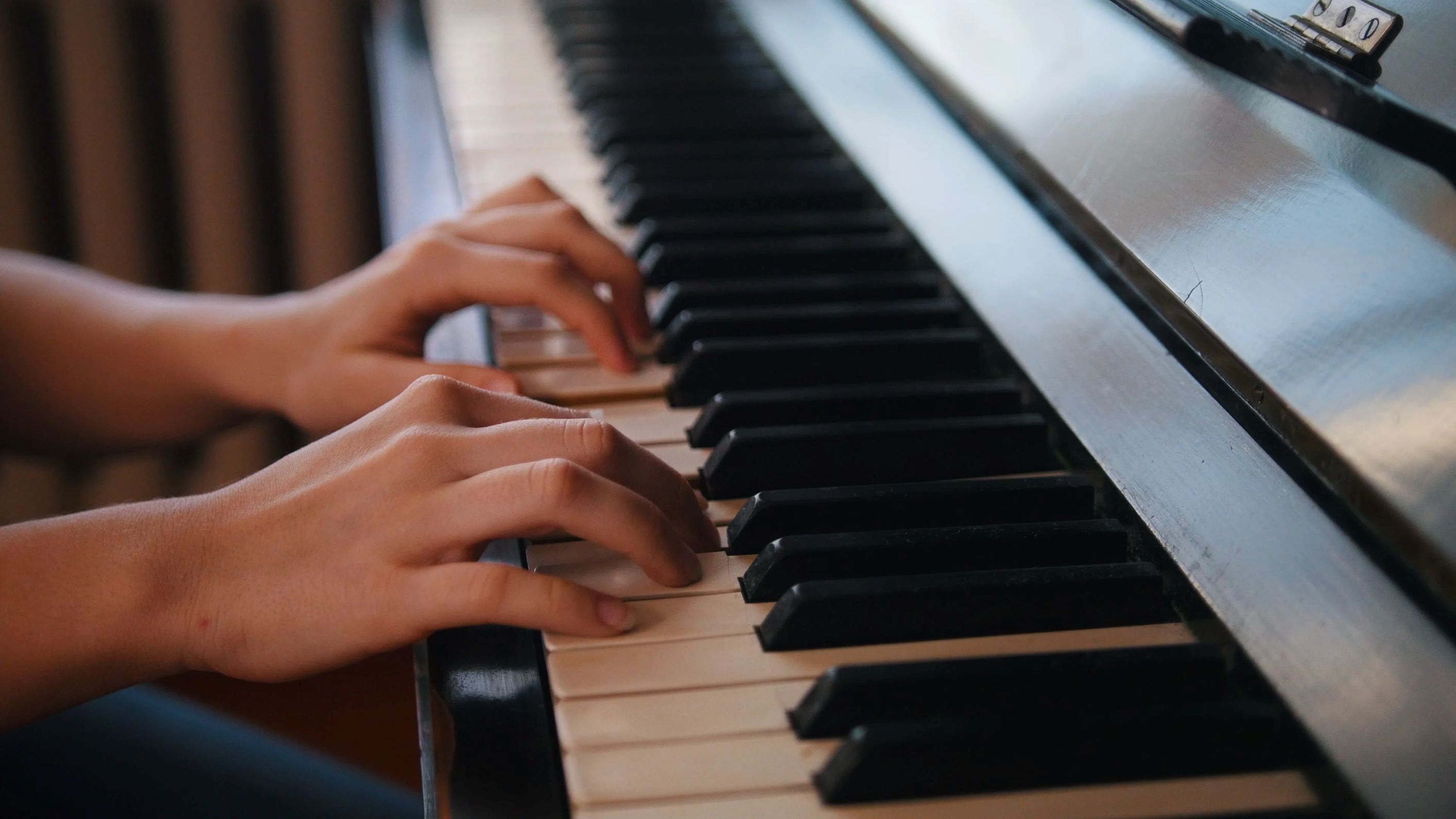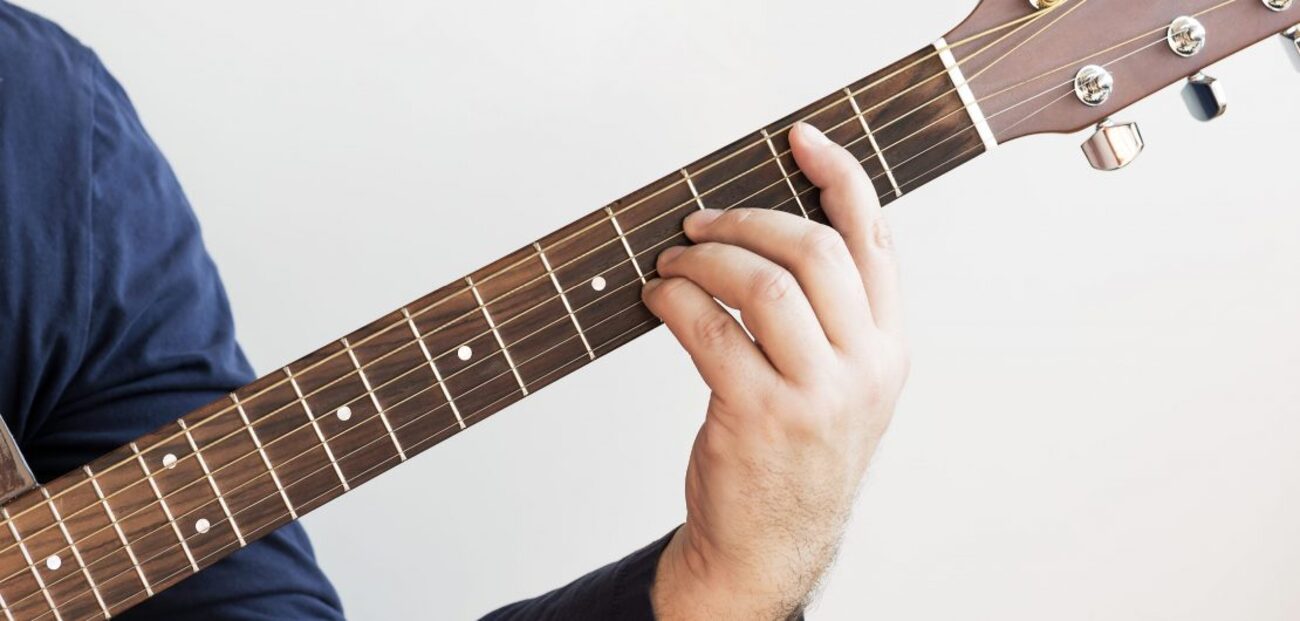

Jazz
How To Play Jazz Chords Piano
Modified: January 29, 2024
Learn how to play jazz chords on the piano with our comprehensive guide. Discover new techniques and take your jazz playing to the next level.
(Many of the links in this article redirect to a specific reviewed product. Your purchase of these products through affiliate links helps to generate commission for AudioLover.com, at no extra cost. Learn more)
Table of Contents
Introduction
Welcome to the world of jazz chords and piano playing! Jazz is a genre of music that is known for its intricate harmonies and improvisational style. Whether you are a beginner or an experienced pianist, understanding jazz chords is essential for mastering the art of playing jazz piano.
In this article, we will explore the fundamentals of jazz chords, including basic and extended chords, as well as how to incorporate them into your piano playing. We will also explore jazz chord progressions and improvisation techniques that will take your playing to the next level.
Jazz chords are different from traditional classical chords in several ways. While classical music tends to rely on simple triads, jazz chords are more complex and colorful, adding unique flavors and tension to the music. The use of extended chords, rootless voicings, and altered notes are integral to creating that distinctive jazz sound.
Understanding jazz chords opens up a world of possibilities for expressing yourself musically. By incorporating these chords into your piano playing, you’ll be able to add richness and sophistication to your sound, as well as have more freedom in your improvisations.
Whether you aspire to play in a jazz band or simply want to add a touch of jazz to your repertoire, learning jazz chords will greatly enhance your musical journey. So, let’s dive into the world of jazz chords and explore how they can transform your piano playing!
Understanding Jazz Chords
In order to effectively play jazz piano, it is crucial to have a solid understanding of jazz chords. Unlike traditional chords that are based on simple triads, jazz chords are more complex and sophisticated, adding color and tension to the music.
Jazz chords primarily consist of four or more notes, known as extended chords. These extended notes include the 7th, 9th, 11th, and 13th, which are added to the basic triad to create a richer and more harmonically complex sound.
One of the key characteristics of jazz chords is their flexibility. Jazz musicians often use different voicings and inversions of chords to create a unique and personal sound. This allows for creativity and variation in how the chords are played.
Another important aspect of jazz chords is the concept of tension and release. Tension refers to the use of dissonant notes that create a sense of anticipation and unease, while release is the resolution of that tension to a more stable and consonant sound. This interplay between tension and release is what gives jazz its distinct and captivating sound.
It is also worth noting that jazz chords can be altered to add additional color and flavor. Altered chords involve changing certain notes within the chord to create a more dissonant or chromatic sound. This alteration adds a unique character to the chords and allows for further expression and experimentation.
To fully grasp jazz chords, it is important to have a good knowledge of music theory, particularly understanding scales and chord progressions. This knowledge will enable you to analyze and interpret jazz compositions, as well as improvise and create your own musical ideas.
Overall, understanding jazz chords is essential for anyone looking to explore the world of jazz piano. By mastering these chords, you’ll be able to add depth, complexity, and creativity to your playing, enabling you to fully express yourself in the world of jazz music.
Basic Jazz Chords
When diving into the world of jazz piano, it’s important to start with the basics. Basic jazz chords are the foundation upon which more complex and advanced chords are built. These chords form the backbone of many jazz compositions and provide a solid starting point for any aspiring jazz pianist.
The most common basic jazz chords are the major 7th, dominant 7th, minor 7th, and minor 7th flat 5 (also known as half-diminished) chords. Let’s take a closer look at each of these chords:
- Major 7th Chords: These chords consist of the root, major third, perfect fifth, and major seventh intervals. For example, in the key of C, a C major 7th chord would be spelled C-E-G-B. Major 7th chords have a warm and smooth sound and are often used in jazz ballads and more mellow compositions.
- Dominant 7th Chords: Dominant 7th chords are similar to major 7th chords, but with a minor seventh interval. In the key of C, a C dominant 7th chord would be spelled C-E-G-Bb. Dominant 7th chords have a stronger, bluesy sound, and are commonly used in jazz to create tension and resolve to other chords.
- Minor 7th Chords: Minor 7th chords are formed by adding a minor seventh interval to a minor triad. In the key of C, a C minor 7th chord would be spelled C-Eb-G-Bb. Minor 7th chords have a mellow, melancholic sound and are frequently used in jazz compositions.
- Minor 7th flat 5 (Half-Diminished) Chords: These chords combine a diminished triad with a minor seventh interval. In the key of C, a C minor 7th flat 5 chord would be spelled C-Eb-Gb-Bb. Minor 7th flat 5 chords have a tense, mysterious sound and are commonly used in jazz to create dissonance and tension.
These basic jazz chords serve as a starting point for building more complex harmonies and progressions. As you become comfortable with these chords, you can explore different voicings, inversions, and variations to add your own personal touch to your playing.
Remember, practice is key when learning jazz chords. Start by playing these chords in different keys and progressions, and gradually incorporate them into your improvisations. With time and dedication, these basic jazz chords will become second nature, allowing you to delve deeper into the world of jazz piano.
Extended Jazz Chords
Building upon the foundation of basic jazz chords, extended jazz chords add an extra layer of complexity and sophistication to your playing. These chords include additional notes beyond the basic triad and can create rich and colorful harmonies that are characteristic of jazz music.
The most commonly used extended jazz chords include the major 9th, dominant 9th, minor 9th, and dominant 13th chords. Let’s take a closer look at each of these chords:
- Major 9th Chords: Major 9th chords consist of the root, major third, perfect fifth, major seventh, and major ninth intervals. For example, in the key of C, a C major 9th chord would be spelled C-E-G-B-D. Major 9th chords have a lush and dreamy sound and are often used to create a sense of sophistication and elegance in jazz compositions.
- Dominant 9th Chords: Dominant 9th chords, similar to dominant 7th chords, incorporate a major ninth interval. In the key of C, a C dominant 9th chord would be spelled C-E-G-Bb-D. Dominant 9th chords have a strong and bluesy sound and are frequently used in jazz to add depth and complexity to chord progressions.
- Minor 9th Chords: Minor 9th chords combine a minor seventh interval with a major ninth interval. In the key of C, a C minor 9th chord would be spelled C-Eb-G-Bb-D. Minor 9th chords have a moody and introspective sound and are often used to evoke a sense of melancholy in jazz ballads and introspective compositions.
- Dominant 13th Chords: Dominant 13th chords include the root, major third, perfect fifth, minor seventh, major ninth, eleventh, and major thirteenth intervals. In the key of C, a C dominant 13th chord would be spelled C-E-G-Bb-D-F-A. Dominant 13th chords have a lush and full sound and are frequently used in jazz to create a sense of resolution and finality.
These extended jazz chords provide a palette of harmonic possibilities to explore in your piano playing. As with the basic jazz chords, experimenting with different voicings, inversions, and variations will allow you to add your own unique touch to these chords.
By incorporating extended jazz chords into your playing, you can bring a new level of complexity and sophistication to your jazz piano repertoire. These chords will add depth and nuance to your compositions, as well as provide greater opportunities for improvisation and musical expression.
Practice playing these extended jazz chords in different keys and progressions to familiarize yourself with their unique sounds. With time and dedication, you’ll be able to seamlessly incorporate these chords into your playing, expanding your musical horizons in the world of jazz piano.
Rootless Chords
In the realm of jazz piano, rootless chords are an essential tool for creating harmonic movement and adding a sense of sophistication to your playing. Rootless chords are voicings that omit the root note of the chord and instead focus on the higher intervals, such as the third, seventh, and extensions. These chords are commonly used in jazz to accompany other instruments or soloists, as they provide a more open and spacious sound.
By removing the root note, rootless chords allow for greater flexibility and freedom in the left hand while providing the pianist with an extended range to voice melodic ideas in the right hand. This enables the pianist to create more intricate and complex voicings within a chord progression.
One popular example of a rootless chord is the “So What” voicing, named after the famous composition by Miles Davis. This voicing is commonly used in modal jazz and consists of the third, seventh, ninth, and eleventh intervals of a chord, omitting the root and fifth. For example, in the key of D, a Dm7 chord voiced as a rootless “So What” chord would be spelled F-C-E-B.
Rootless chords are particularly useful when playing with a bass player, as the bassist will typically cover the root note of the chord. This allows the pianist to focus on adding harmonic color and tension to the music without overcrowding the lower frequencies.
When utilizing rootless chords, it’s important to be mindful of voice leading and maintaining a smooth and logical progression from one chord to the next. Pay attention to the intervals and movement of individual notes between chords to create a seamless and coherent sound.
Experiment with different inversions, extensions, and voicings of rootless chords to find the sounds that resonate with you. As with any new skill, practice is key to developing proficiency in using rootless chords. Spend time exploring these voicings in different keys, chord progressions, and musical contexts to enhance your understanding and mastery.
By incorporating rootless chords into your jazz piano playing, you’ll be able to create a more harmonically engaging and sophisticated sound. These chords open up a world of possibilities for accompanying other musicians, soloing, and expressing your musical ideas in the rich language of jazz.
Jazz Chord Progressions
Chord progressions are the building blocks of music, and in jazz, they play a crucial role in creating the harmonic landscape of a composition. Jazz chord progressions are known for their complexity and unique harmonic movements, which add richness and depth to the music.
One common characteristic of jazz chord progressions is the use of extended chords and altered chords. These chords create tension and release, adding color and excitement to the overall sound. Jazz progressions often feature ii-V-I progressions, which are a sequence of chords built on the second, fifth, and first scale degrees of a key. These progressions are commonly used in jazz standards and provide a strong sense of resolution.
Another popular chord progression in jazz is the blues progression. The typical 12-bar blues progression features a I-IV-V progression with dominant 7th chords. This simple yet powerful progression allows for endless variations and improvisation, making it a staple in jazz repertoire.
Jazz musicians also frequently incorporate secondary dominant chords and tritone substitutions to add harmonic interest and movement. Secondary dominants are chords that temporarily resolve to a non-tonic chord, creating tension and leading to a different harmonic destination. Tritone substitutions involve replacing a dominant chord with another dominant chord whose root is a tritone away. This substitution creates a unique and unexpected sound.
Modal progressions are another important aspect of jazz chord progressions. Modal jazz is characterized by a focus on modes and scales, rather than traditional functional harmony. Modal progressions often feature repetitive chord sequences that provide a platform for improvisation and exploration.
It is important to note that while jazz music provides a framework for chord progressions, improvisation and personal interpretation play a significant role. Jazz musicians often experiment with variations, substitutions, and reharmonizations to create their unique sound and add their personal flair to the music.
Studying and analyzing jazz chord progressions is crucial for any aspiring jazz pianist. By understanding the underlying theory and structure, you will be able to navigate and interpret jazz compositions more effectively, as well as develop your improvisational skills.
So, immerse yourself in the world of jazz chord progressions, experiment with different voicings, substitutions, and variations, and let the harmonies and melodies guide your musical journey.
Incorporating Jazz Chords in Piano Playing
When it comes to jazz piano playing, incorporating jazz chords is essential to creating an authentic and captivating sound. Jazz chords add depth, complexity, and a touch of sophistication to your playing, allowing you to express yourself musically in a unique way. Here are some tips on how to incorporate jazz chords into your piano playing:
- Study Jazz Standards: Start by learning and analyzing jazz standards. These compositions serve as a foundation for understanding common chord progressions and the use of jazz chords. Take note of the chord voicings used in these songs and practice playing them in different keys.
- Experiment with Voicings: Jazz chords offer a variety of voicings and inversions. Explore different ways of playing the same chord by using different parts of your hand or altering the order of the notes. This will help you find the voicings that suit your playing style and create the desired mood.
- Practice Chord Progressions: Work on different jazz chord progressions, such as ii-V-I progressions, blues progressions, and modal progressions. Practice transitioning smoothly between chords and experiment with different rhythmic patterns and dynamics to enhance your musicality.
- Utilize Rootless Chords: Incorporate rootless chords into your playing to create a more open and spacious sound. Experiment with different voicings that omit the root note and focus on the higher intervals. This will allow you to add more melodic ideas and improvisations to your playing.
- Add Altered and Extended Chords: Jazz chords often involve altered notes and extended intervals. Incorporate these elements into your playing to add tension, color, and harmonic interest. Experiment with altered chords and extended chord voicings to create unique sounds and improvisational opportunities.
- Listen to Jazz Pianists: Take inspiration from jazz pianists who have mastered the art of incorporating jazz chords into their playing. Listen to recordings of legendary pianists such as Bill Evans, Herbie Hancock, and McCoy Tyner, and study their use of chords, voicings, and improvisation techniques.
- Transcribe and Analyze Piano Solos: Transcribe and analyze piano solos in jazz recordings. Pay attention to how the pianist navigates chord progressions and uses jazz chords in their improvisation. Incorporate similar techniques into your own playing and adapt them to suit your style.
Remember, the key to incorporating jazz chords in piano playing is practice. Dedicate regular time to developing your chord vocabulary, understanding chord progressions, and experimenting with different voicings and improvisation techniques. Combine technical exercises with playing along with jazz recordings and jamming with other musicians to enhance your skills and musicality.
Ultimately, incorporating jazz chords in your piano playing will open up a world of musical possibilities, allowing you to express yourself in the rich and vibrant language of jazz. Embrace the joy of exploration, creativity, and improvisation, and let the beauty of jazz chords shine through in your playing.
Jazz Improvisation Techniques with Chords
In jazz, improvisation is a cornerstone of the musical style, allowing musicians to express their creativity and individuality. When it comes to jazz piano improvisation, understanding how to navigate chords is crucial. Here are some techniques you can use to enhance your jazz improvisation with chords:
- Arpeggios: Arpeggios are a fundamental tool for improvisation. Practice playing arpeggios of different chord types and extensions. By outlining the chord tones as you solo, you can create melodic lines that are harmonically grounded and sound in sync with the underlying chords.
- Chord Tone Targeting: Focus on landing on chord tones on strong beats or resolving to a chord tone at the end of a musical phrase. This technique helps create a strong connection between your improvisation and the underlying harmony, providing a sense of resolution and added musicality.
- Passing and Approach Chords: Experiment with passing and approach chords to add chromaticism and tension to your improvisation. These chords are used to smoothly connect one chord to another, creating interesting melodic movement and harmonic color.
- Guide Tones: Guide tones are the third and seventh degrees of a chord. Incorporate these tones into your improvisation to create a melodic and harmonic foundation. Focus on emphasizing guide tones when transitioning between chords to add stability and direction to your playing.
- Contrast in Rhythmic Patterns: Vary your rhythmic patterns and phrasing to add interest and energy to your improvisation. Experiment with syncopation, staccato, legato, and other rhythmic devices to create contrast and drive in your playing.
- Chord Substitutions: Explore different chord substitutions to add a fresh twist to your improvisation. Substitute chords within a progression to create unexpected harmonic choices. Tritone substitutions and tritone extensions are common substitutions that can create tension and harmonic interest.
- Rhythmic and Melodic Development: Develop your improvisation by expanding on rhythmic and melodic motifs. Take a simple melodic idea and explore different variations and developments. Repeat and vary the motif, adding embellishments and using different chord tones to create a sense of continuity and growth.
- Interaction with Other Musicians: Jazz is often a collaborative effort, and interacting with other musicians is an important aspect of improvisation. Listen and respond to what other musicians are playing, creating musical conversations and building on their ideas. This dynamic interplay adds excitement and spontaneity to your improvisation.
Remember, improvisation is about taking risks and exploring new musical possibilities. As you incorporate these techniques into your jazz piano playing, allow yourself to freely experiment, make mistakes, and learn from them. The more you practice and immerse yourself in the world of jazz improvisation, the more you will develop your unique voice and style.
Ultimately, jazz improvisation with chords is about expressing yourself and connecting with the music on a deeper level. Explore, create, and have fun as you navigate the rich harmonic landscape of jazz!
Conclusion
Congratulations on embarking on your journey into the world of jazz chords and piano playing! Understanding and incorporating jazz chords into your repertoire is an exciting and essential step towards becoming a skilled jazz pianist.
Throughout this article, we explored the fundamentals of jazz chords, including basic and extended chords, as well as rootless voicings. We discussed the importance of studying jazz chord progressions and how they provide the framework for improvisation and musical expression. We also delved into techniques for incorporating jazz chords in your piano playing, such as arpeggios, chord tone targeting, and chord substitutions.
As you continue to develop your jazz piano skills, remember that practice and experimentation are key. Dedicate regular time to honing your knowledge of jazz chords, exploring different voicings, and analyzing jazz compositions. Allow yourself to get lost in the music, embracing the freedom and creativity that jazz offers.
Additionally, listening to and studying the work of jazz pianists who have paved the way before you will deepen your understanding and inspire your own playing. Jazz is a language, and by immersing yourself in its rich history and vocabulary, you will develop your own unique voice within the genre.
Lastly, don’t forget the importance of playing with other musicians and engaging in jam sessions. Jazz is a collaborative and interactive art form, and by sharing your playing with others, you will not only enhance your own skills, but also experience the joy of collective musical creation.
So, continue to explore, learn, and grow as you incorporate jazz chords into your piano playing. Immerse yourself in the world of jazz and let the harmonies and melodies guide you on a beautiful musical journey. Whether you aspire to perform on stage or simply enjoy the art of jazz piano in your own practice space, jazz chords will undoubtedly enrich your musicality and creative expression.

